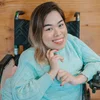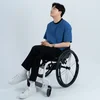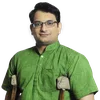Meet 5 creators who are using their channels to inspire us all
Dec 08, 2021 – [[read-time]] minute read

Dec 08, 2021 – [[read-time]] minute read
At YouTube, our mission is to give everyone a voice and show them the world. We believe that people create a better world when they listen, share, and build community through stories.
We’re proud of the diversity amongst creators, and inspired by how they use their channel to make an impact on society. Read on to hear from five creators who are using their voices to increase awareness, encourage inclusivity, and advocate for the acceptance of people with disabilities.

“We’re not really dis-abled, we just do things differently than you.”
Can you tell us a little bit about yourself and your channel?
I’m Jozelle Tech, and I run a brand creative consultancy called The Rolling Media, as well as wearing different hats on a daily basis, from entrepreneur, mentor, vlogger, and friend, to inspirational speaker and Persons with Disabilities (PWD) advocate.
How did you get started as a creator on YouTube?
My channel started out as a passion project. I thought it would be fun and insightful to show what living with my disability is really like, while encouraging other differently-abled individuals to live their lives and make the most out of it. The name of my channel is 'iEhmAble' (I Am Able), which is a play on my nickname Ehm. As the name suggests, it’s a reminder to myself and other differently-abled individuals that we are able and worthy.
How do you use YouTube to share your story and advocate for your community?
My content includes travel vlogs, advocating for PWD inclusion in the workplace, tips for freelancers, and valuable content for my company’s clients and audience. I think YouTube is a great way to be visible to these audiences that I hope to serve and empower. I wasn’t always comfortable being on camera, but I realized that I was given this reality, this disability, these perspectives, these strengths, these specific skills for a reason, and it would be a huge waste if I didn’t share it with the world.
Any advice for fellow creators on how they can be better allies and advocates for you?
Start with why. Why do you want to be involved? What are your intentions for getting involved? Then start small. What comes naturally to you, that won't be a huge chunk of your time and effort? The reason why I recommend starting small is that it's easier to build from something small, plus it lets you enjoy the process of making it big. Everything you do in life has to start with what you have because you can never give something that you don't have.

“I strive to bring hope to those who are challenged both physically and mentally."
Can you tell us a little bit about yourself and your channel, WERACLE?
I’m Park We, and I am a wheelchair user from Korea with a positive worldview. My channel's name is WERACLE, and it’s a play on my name, “We,” combined with “miracle.” This gives a sense of what I hope to convey with my channel, reminding each of us that every day we live is a miracle, whatever challenges we face.
How did you get started as a creator on YouTube?
Around seven years ago, I fell and broke my neck, and my spinal nerves were damaged. I was paralyzed overnight and unable to perform everyday tasks. I soon realized that I had previously taken these daily routines for granted, and they are not at all normal but are part of life’s miracles. Through my rehabilitation, I had a vision of sharing my story with others and inspiring hope in them. I found YouTube to be a great place to connect with people from around the world. It gave me a platform to share my will and courage to enjoy my life with paralysis. That's how my channel, WERACLE, was born.
How can creators educate themselves about your disability?
I think the most important thing is to have direct interaction with people with disabilities. If you do not have the opportunity to, then I’d recommend that you learn about the various disabilities through watching videos of creators with disabilities. For instance, you can learn a lot about me and my disability through the videos on my channel: you'll learn my story, how I live in my wheelchair, and even how I drive.
Any advice for fellow creators on how they can be better allies and advocates for you?
My advice is to meet more people. For example, you could film a collaboration video with a creator with disabilities. And through that experience, it will help you to understand me better. Additionally, including subtitles in your videos is another way to be more inclusive and ensure your content is accessible to everyone.

“It’s time to say ‘no’ to the labels like ‘crippled,’ ‘handicapped,’ ‘disabled,’ or ‘special.’”
Can you tell us a little bit about yourself and your channel?
I’m Muniba Mazari, an artist, speaker, television anchor, humanitarian, and UN Women’s Goodwill ambassador for Pakistan. My YouTube channel is all about spreading the message of inspiration, compassion, and hope.
How do you use YouTube to share your story and advocate for your community?
I’ve always said that disability doesn’t define you. In fact, to me, it’s an inability to see someone’s abilities. People are unique and should be celebrated for who they are, whether they are in a wheelchair or not. I’m glad to say that, through my YouTube videos, people see me, and not my wheelchair. They see my abilities and not my disabilities. To me, the best way to spread awareness is to be in the public eye and do what you do best — live your life to the fullest and make sure that you reach out to those who need your help.
Are there any disability etiquette tips you wished more people knew about?
Acceptability towards people who are unique and differently abled is the key. There are a few “dont’s” that I’d like to share with everyone:

“Disability is, and has always been, an integral part of human existence. We must not ignore or undermine its impact on people's lives.”
Can you tell us a little bit about yourself and your channel?
I’m Lalit Kumar, a polio survivor from New Delhi, India, who runs WeCapable.com — an online, English-language disability resource. Soon after launching the site I realized that a lot of my readers were more comfortable with Hindi, so I created Dashamlav, my YouTube channel, to better serve this community.
How do you use YouTube to share your story and advocate for your community?
I use my YouTube channel to give my viewers information about disability rights, laws, and government welfare schemes for PWDs, as well as running a Q&A series, where I answer disability-related questions from my viewers. I also publish videos on various types of disabilities, mental health awareness, and motivation on the channel.
How can creators educate themselves about your disability?
The term “disability” refers to a huge spectrum of physical, mental, emotional, and behavioral conditions that may keep a person from leading a regular social and functional life, so it’s not just about me. I would encourage creators to educate themselves on all of the disabling conditions they encounter.
What advice would you give to creators on how to help them make their content more accessible?
Creators should be more inclusive when they create videos because there are a lot of people in the world who have a harder time consuming visual or audio information. I recommend that creators read my published material on WeCapable.com outlining the steps that need to be taken for making videos accessible. I am also always personally available to answer any questions on this topic.

“Through my channel, I want to prove that disability is not an obstacle to thriving in life.”
Can you tell us a little bit about yourself and your channel?
I’m Amanda Farliany, and I am deaf but that doesn’t stop me from reaching my dream and my achievements. I use my YouTube channel to share my daily life, cover songs with sign language, and teach BISINDO, the Indonesian Sign Language, to my viewers.
How can creators educate themselves about your disability?
There’s lots of great content out there to help other creators to educate themselves and get to know more about the Deaf community. Learning some gestures of the sign language used in your country can also help you to communicate more easily.
What advice would you give to creators on how to help them make their content more accessible?
Want to be a better ally? These resources are a great place to start.